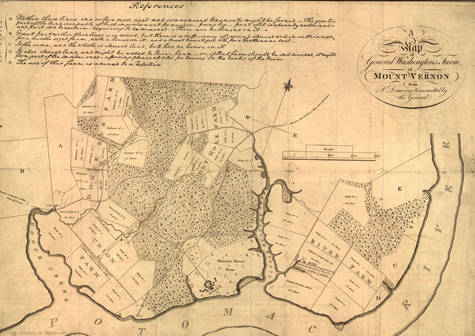Sign up for the Family Tree Newsletter Plus, you’ll receive our 10 Essential Genealogy Research Forms PDF as a special thank you!
Get Your Free Genealogy Forms
"*" indicates required fields

Image courtesy the Library of Congress.
Americans today recognize Presidents’ Day, a holiday commemorating the US commanders-in-chief throughout history, but the holiday has its origins in nationwide celebrations of George Washington’s birthday (February 22). Washington’s hallowed family home, Mount Vernon, remains a popular tourist attraction for history buffs and genealogists alike, particularly on the weekend that celebrates America’s first president.
This map, from Washington’s private collection of writings, depicts Mount Vernon as “transmitted” by the General himself. The detailed, to-scale map specifies how large each tract of land was and what it was used for, plus which portions of the property were still wooded/hadn’t been cleared for settlement or development. Notice the labels for the five different farms on the property (Union, Dogue Rur, Muddy Hole, River, and Mansion House), and the notes indicating distances to Colchester (in the west) and Alexandria (to the east). The Washingtons’ iconic mansion, one of the few labeled structures on the property, sits right on the Potomac, where it remains today.
ADVERTISEMENT




